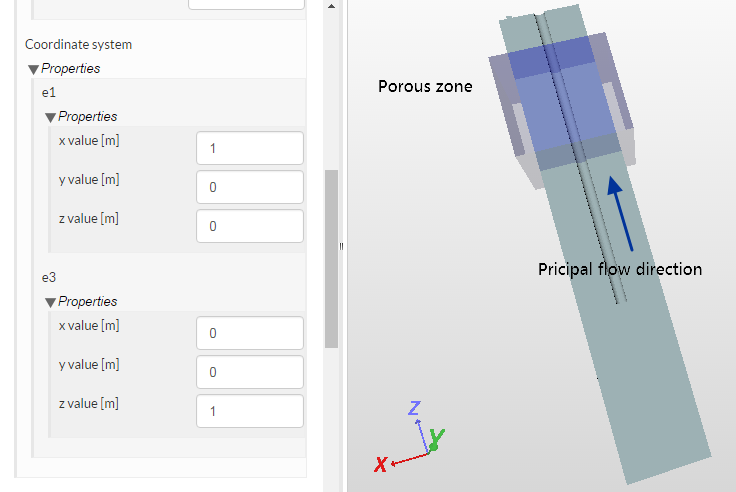Greetings, everybody!
I’m having problems trying to simulate a flow passing inside a pipe through a porous element. My purpose is to simulate the airflow through a radiator and compare the pressure drop obtained with the manufacturer’s data I have available. The problem is I don’t know how to set the parameters properly. I’ll show you all the steps I’m taking in order to get this simulation running. You can also access the project: https://www.simscale.com/workbench?publiclink=4738ed9f-c2d1-4290-8e71-6f0fc72992f4 (Check Simulation 2)
The analysis type is Compressible Steady State Flow Simulation, Turbulence Model: Omega SST. The radiator I want to simulate is represented by the Cartesian Box in the picture bellow. The Porous Media characteristics will be applied in this same Box.
The Darcy-Forchheimer coefficients were determined following the instructions I found in this LINK, which contains some FLUENT instructions. The specific method I’m referring to is found in the topic “Deriving the Porous Coefficients Based on Experimental Pressure and Velocity Data”. Since I have the manufacturer’s Pressure Drop Data, it was possible to determine the Pressure Drop per Flow Speed in the core of the radiator and follow the instructions on that link.
With the coefficients ‘d’ and ‘f’ determined, I now need to fill in the Porous Medium parameters on SimScale. As you can see in the picture, the flow will move in the X direction. This is why I want to set the Porous Media in a way that its permeability is ONLY in this direction. I don’t want the Porous Media to be ISOTROPIC. It has to work only in the X direction.
With that being said, I need help filling these parameters. What changes in the simulation if I only set one of the 3 values (x,y and z) in each Coefficient (“d” and “f”)? And how should I set the vectors e1 and e3?
Finally, if I wanted to simulate a ISOTROPIC porous media, how should these same parameters be filled?
Thanks!

